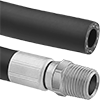Filter by
Wrench Opening Shape
Overall Length
Sold As
Finish
Retaining Ring Style
Head Thickness
Groove Diameter
Ratcheting
DFARS Specialty Metals
Export Control Classification Number (ECCN)
Fastening and Joining
Electrical
Fluid Handling
Containers, Storage, and Furniture
Communication















































